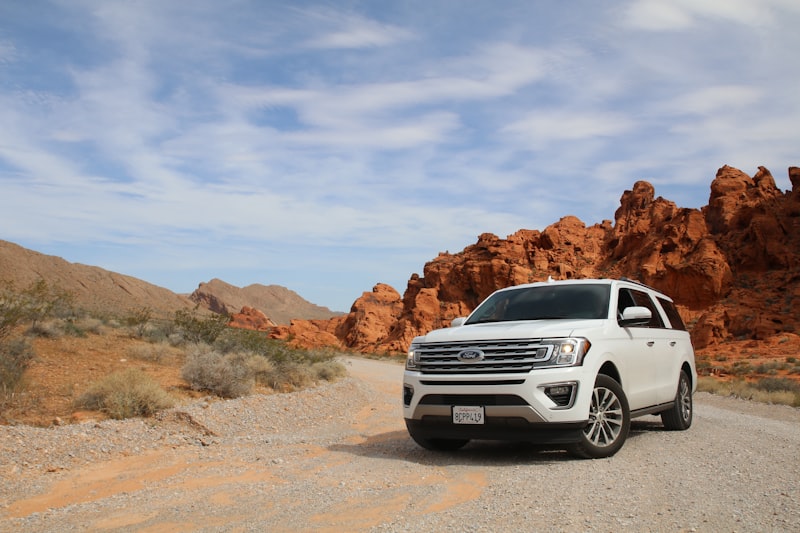Firstly, check your tires. They are your car’s contact with the road, so ensuring they are in top condition is crucial. Check the tire pressure and make sure it matches the manufacturer’s recommendations. Inspect the tread depth to ensure there’s enough grip, especially if you anticipate encountering different road conditions.
Next, inspect your brakes. Brakes are essential for safety, so make sure they are functioning properly. Look for any signs of wear, such as squeaking or grinding noises, and have them inspected by a professional if necessary. Also, check the brake fluid level to ensure it’s adequate for the journey.
Fluid levels are critical for your car’s performance. Check the oil, coolant, transmission fluid, and windshield washer fluid levels, and top them up if needed. Clean fluids help keep your engine running smoothly and prevent overheating or other mechanical issues on the road.
Lights and signals should be in proper working order. Ensure all headlights, taillights, brake lights, and turn signals are functioning correctly. Replace any bulbs that are burnt out or dim to maintain visibility and comply with traffic laws.
Prepare an emergency kit. Include essentials like a flashlight, first aid supplies, jumper cables, basic tools, and a spare tire. It’s also wise to carry extra water and snacks in case of unexpected delays.
Lastly, consider a thorough inspection by a mechanic. They can identify potential issues that you might overlook and provide peace of mind knowing your vehicle is in optimal condition for the trip.
By following these steps and preparing your car meticulously, you can embark on your long-distance journey with confidence, knowing that you’ve taken the necessary precautions to ensure a safe and enjoyable travel experience.
Expert Tips: Preparing Your Car for Safe Long-Distance Journeys
Firstly, check your tires. They are your car’s only contact with the road, so ensure they have sufficient tread depth and are properly inflated. Underinflated tires can affect fuel efficiency and handling, while overinflated tires can lead to a rough ride. Don’t forget to inspect the spare tire as well!
Next, inspect your brakes. Long drives often involve different terrains and varying traffic conditions, so having brakes in good condition is essential for safety. Listen for any unusual noises or vibrations when braking, as these could indicate issues that need attention.
Fluid levels are another critical aspect. Check your engine oil, transmission fluid, coolant, brake fluid, and windshield washer fluid. Low levels can lead to engine overheating, poor performance, or even mechanical failure, especially during extended driving periods.

Battery health is often overlooked until there’s a problem. Ensure the battery terminals are clean and securely connected. If your battery is more than three years old, consider having it tested to avoid any unexpected breakdowns.
Lights and signals should all be in working order. Properly functioning headlights, taillights, brake lights, and turn signals are not only essential for your safety but also for signaling your intentions to other drivers on the road.
Wipers and wiper fluid are vital for maintaining visibility, especially during adverse weather conditions. Replace worn-out wiper blades and ensure the wiper fluid reservoir is topped up with a solution that won’t freeze in cold temperatures.
Lastly, pack an emergency kit. This should include items such as a flashlight, basic tools (like a jack and lug wrench), first aid supplies, blankets, drinking water, and non-perishable snacks. Being prepared for the unexpected can make all the difference in case of a roadside emergency.
By following these expert tips and thoroughly preparing your vehicle before embarking on a long-distance journey, you can ensure a safer and more enjoyable trip for yourself and your passengers. Happy travels!
Essential Checklist: Getting Your Car Ready for a Road Trip
Firstly, check your tires. They are your car’s connection to the road. Make sure they are properly inflated and have adequate tread depth for safe driving. Consider carrying a spare tire and the necessary tools to change it, just in case.
Next, inspect your fluids. Ensure your engine oil, coolant, brake fluid, and windshield washer fluid levels are adequate. Top them off if needed, and consider getting an oil change if you’re due for one.
Brake inspection is paramount. Have your brakes checked to ensure they are functioning properly. Spongy brakes or squealing sounds can indicate issues that need immediate attention.
Lights and signals should be in proper working order. Check your headlights, taillights, brake lights, and turn signals to ensure they are all functioning correctly. This ensures visibility and safety, especially during night driving.
Battery health is crucial. Check for corrosion on the terminals and ensure they are securely connected. If your battery is old or showing signs of weakness, consider replacing it before your trip.

Inspect belts and hoses for any signs of wear and tear. Cracked or frayed belts, as well as bulging hoses, should be replaced to prevent potential breakdowns.
Air conditioning and heating systems should be tested. A comfortable cabin temperature is essential for a pleasant journey, regardless of the weather outside.
Lastly, pack an emergency kit. Include essentials like a flashlight, first aid supplies, jumper cables, a basic toolkit, and roadside assistance contact information. Being prepared for unforeseen circumstances adds an extra layer of security to your trip.
By following this checklist, you can ensure that your car is prepared to handle the miles ahead, allowing you to focus on enjoying the journey rather than worrying about mechanical issues. Ready to hit the road?
Top 10 Must-Do’s Before Driving Long Distances
Driving long distances can be both exciting and challenging. Whether you’re planning a road trip or commuting for work, preparing adequately can make all the difference in your journey. Here are the top 10 must-do’s before hitting the road for a long drive:
-
Check Your Vehicle: Before anything else, ensure your vehicle is in optimal condition. Check the tires, brakes, fluids (oil, coolant, etc.), lights, and wipers to avoid any unexpected breakdowns.
-
Plan Your Route: Plot your route in advance using GPS or a map. Consider alternate routes in case of traffic or road closures. Knowing the route helps reduce stress during the drive.
-
Pack Essentials: Pack a roadside emergency kit with items like a spare tire, jumper cables, flashlight, first aid kit, and necessary tools. Don’t forget essentials like water, snacks, and a phone charger.
-
Get Enough Rest: Ensure you’re well-rested before embarking on a long drive. Fatigue can impair your driving ability and reaction times, increasing the risk of accidents.
-
Adjust Your Seat and Mirrors: Set your seat position for comfort and proper posture. Adjust mirrors to minimize blind spots, ensuring clear visibility around your vehicle.
-
Secure Loose Items: Secure any loose objects inside your car to prevent distractions or hazards in case of sudden braking or turns.
-
Fuel Up: Fill up your gas tank before leaving and plan where you’ll refuel along the way, especially in rural or less populated areas where gas stations may be scarce.
-
Check Weather Conditions: Stay updated on weather forecasts along your route. Be prepared for rain, snow, or extreme temperatures, adjusting your driving style accordingly.
-
Take Breaks Regularly: Schedule breaks every 2-3 hours or as needed to stretch your legs, rest, and stay alert. Avoid driving for extended periods without breaks.
-
Stay Calm and Focused: Long drives can be tiring, but maintaining a calm and focused mindset is crucial. Stay attentive to the road, obey traffic laws, and avoid distractions like texting or adjusting music.
Following these top 10 must-do’s ensures a safer and more enjoyable journey when driving long distances. Prepare well, stay vigilant, and make the most of your travel experience.
Long-Distance Travel Prep: Ensure Your Car’s Road-Ready!
First things first, checking your car’s vital fluids is essential. Engine oil, coolant, brake fluid, and windshield washer fluid levels should be topped up. These fluids are the lifeblood of your car, ensuring everything runs smoothly under the hood. Just like a well-oiled machine, your car needs proper lubrication to perform at its best.
Next up, inspecting your tires is a must. Proper tire pressure and tread depth are critical for safety and fuel efficiency. Low tire pressure can lead to poor handling and increased risk of blowouts, especially during long drives. Imagine your tires as the sturdy shoes that carry your car across miles of highway – they need to be in top shape for a comfortable ride.
Don’t forget about the brakes! Brake pads and discs should be inspected for wear. Squeaky brakes are like a car’s way of telling you it needs attention. Ensuring your brakes are in good condition gives you peace of mind, knowing you can stop safely when needed.
Lights and signals are often overlooked but are vital for visibility, especially during nighttime driving or adverse weather conditions. Check that all lights – headlights, brake lights, turn signals, and hazard lights – are working correctly. These lights are your car’s voice on the road, signaling your intentions to other drivers.
Lastly, pack an emergency kit. Just like an adventurer’s backpack, your car emergency kit should include essentials like a flashlight, jumper cables, a first aid kit, and basic tools. You never know when you might need them, but being prepared can make all the difference in unexpected situations.
With these preparations in place, you’re all set to hit the road with confidence. Long-distance travel is about the journey as much as the destination, and a well-prepared car ensures you can enjoy every mile to the fullest. So buckle up, start your engines, and let the road trip begin!
Frequently Asked Questions
What emergency items should I pack for a long-distance drive
Ensure safety and preparedness on long-distance drives with essential emergency items. Pack items such as a first aid kit, flashlight, blankets, water, non-perishable snacks, basic tools, and a fully charged phone. These items can help in emergencies and unexpected situations during your journey.
Which fluids should I check and top up before a long journey
Ensure your vehicle’s engine oil, coolant, brake fluid, and windshield washer fluid are checked and topped up before embarking on a long journey.
How often should I service my car before long-distance travel
Learn how frequently you should service your car before embarking on a long-distance journey, ensuring optimal performance and reliability.
What are the essential checks before a long trip
Ensure your vehicle is in optimal condition by checking tire pressure, fluid levels, and brakes. Plan your route in advance, considering weather conditions and traffic updates. Pack essentials such as a first aid kit, snacks, and emergency contact information. Confirm reservations for accommodations and activities to avoid last-minute hassles.
How do I ensure my tires are ready for a long road trip
Ensure your tires are ready for a long road trip by checking their tread depth, inflation pressure, and overall condition. Use a tire pressure gauge to ensure they are inflated to the manufacturer’s recommended levels. Inspect for any signs of wear, such as cracks or bulges, and replace if necessary. Consider rotating your tires if mileage suggests it’s time. Properly maintained tires contribute to safer and more efficient travel.


